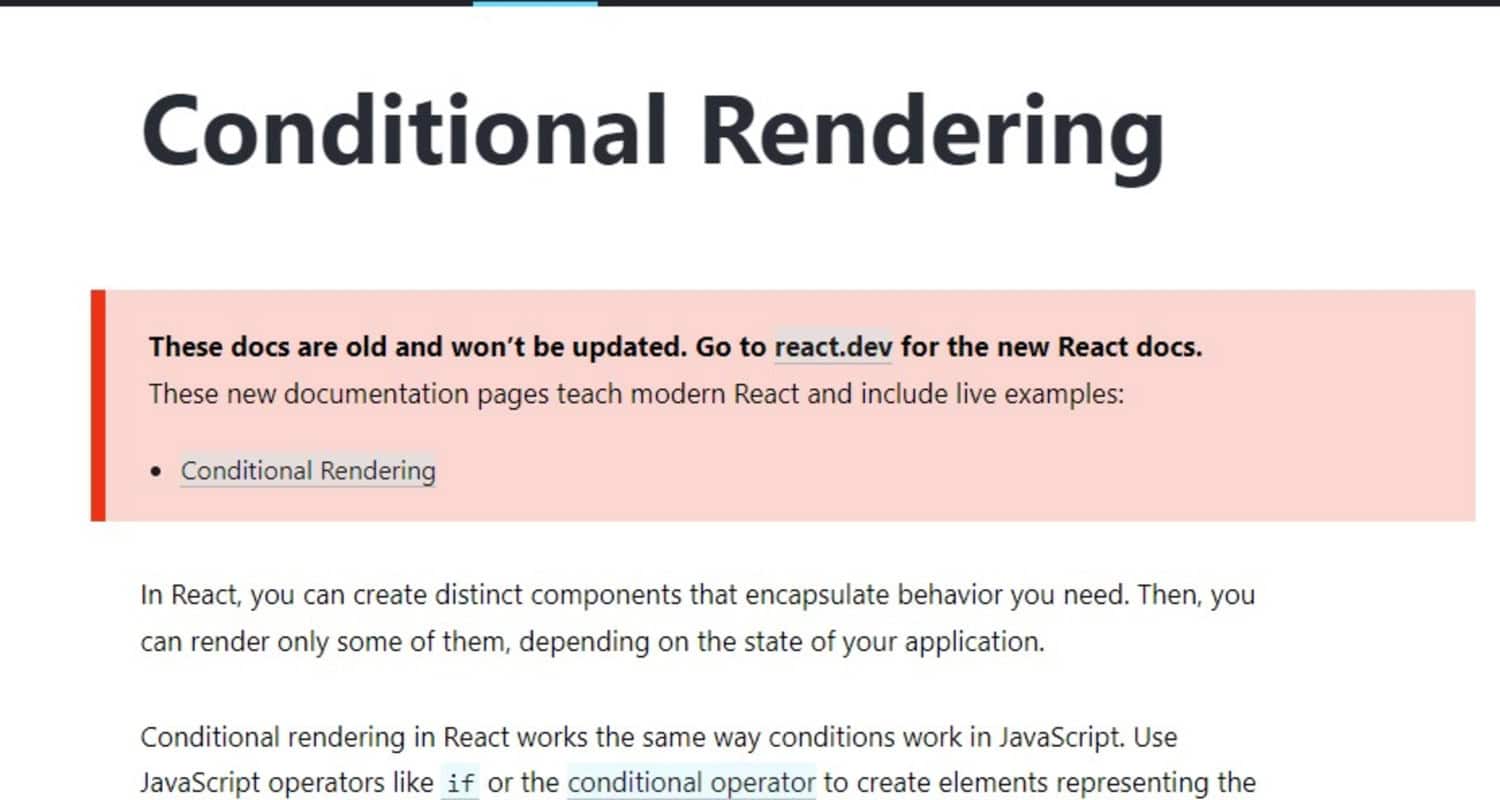React is becoming the web development framework of choice and has revolutionized interface design. In this article, we will be explaining what react conditional props are.
React conditional props show different information within components based on user actions or specific conditions. The modules, which change data states without disrupting others, enhance the modularity and flexibility of the development process.
This makes React conditional props more flexible and varied as a result, thus influencing a vibrant and people-friendly user interface experience. Let us look at some basics of react conditional props and how they will affect react apps in the future.
Table of Contents
Basics of React Conditional Props
This means that components in a React application can modify their behavior depending on which state and condition they are in.
What Is React Conditional Props?
Some parts of React sometimes require one to be in charge of specific performances. For this reason, developers can use react conditional props to specify how these components ought to act. Therefore, their appearance, state, or functionality may vary according to certain conditions.

React conditional props are beneficial since they enable easy modifications and interactivity. It gives users a pleasant experience where building robust interfaces that react appropriately is possible.
Common Use Cases for Conditional Props
React conditional props are helpful in many cases. They are:
Dynamic Styling:
It is made possible by the use of conditional props. An excellent example is when a theme prop is properly given a definition. Thus, the color palette for an element can be adequately understandable, ensuring a consistent visual experience across the whole application.
State Management:
Components must often change their state as they respond to user interactions or changes in data. Components have conditional properties such as “disabled” or “active,” allowing them to control their state dynamically.
Conditional Rendering:
When different conditions exist, components will render different content or structures. This necessitates the usage of conditional props to decide what should be laid out, increasing the adaptability and flexibility of the components.
Managing User Input:
If components employ conditional props like onClick and onchange, they can effectively handle user inputs, resulting in dynamic management of these interactions and a responsive user experience.
Data Display:
Regarding data display components for cards and lists, conditional props could be employed to handle variations in data presentation. Furthermore, the highlight prop can be useful to specify whether or not particular details should be in the highlight.
Method 1: Inline Conditional Statements in Attribute Props
Inline conditionals in attribute props of React are essential for changing component behavior dynamically based on changing conditions. Common ways of achieving this include using the ternary operator (? :) and the logical AND (&&).
The ternary operator is beneficial in JSX components that conditionally display specific values. For example, you can change what an h1 tag says depending on a change in the value of IsLoggedIn.

JSX rendering, on the other hand, can be sped up by using a logical AND operator to display items selectively only when a particular criterion is done. This is seen in the following example, where a p> element will appear if the prop show element is set to true.
In terms of code readability and maintainability, these inline conditionals allow developers to adapt components for different contexts while maintaining clarity.
This is especially important for creating responsive and dynamic React applications that change their appearance or behavior based on user interactions or application states.
Method 2: Using If Statements for Clarity
To clarify attribute management in React, you can use if statements outside of JSX to handle multiple attributes. This enables writing shorter code that is easy to read and maintain through condensing conditional logic.
Though inline conditionals could be briefer, they miss the clarity and organization of if statements, especially if many conditions or complex reasoning are involved. This method of handling attributes improves understanding of React components and encourages cooperation between different developers on a single codebase.
Method 3: Spread Props for Efficiency
JavaScript objects have a spread syntax that reduces the complexity of codes by allowing for the merging of attributes from one object to another. For instance, let us assume we have two objects: obj1, which contains x and y. In this case, the spread syntax is being used to create a new object called obj2 from obj1 and including another property z.
This method highly enhances code readability while reducing or avoiding any manual assignment of properties and getting rid of unnecessary codes. It guards against alterations because it preserves the original state of an object.
Spreading attributes using this syntax intends to make brevity and understanding in coding possible. Today, several developers deploy this approach to simplify object manipulation and facilitate maintainability in their source code in most JavaScript projects.
See Also: React Query with Redux: Everything to Know
Best Practices in Conditional Rendering
Conditional rendering can be improved by using fewer if-else statements to make the code readable and easy to maintain. Making conditions explicit and short helps to avoid excessive nesting. For simplicity, ternary operators give a more compact inline conditional rendering.

The && operator is the most efficient for basic conditional rendering, whose decision depends on only one expression. On the contrary, switch-case statements are helpful in cases where there might be different results.
Multiple contexts may be addressed within the code by using enum objects, thus enhancing the structure of the code and avoiding errors. This is because of the importance of having a balancing act between both approaches depending on how complex the criteria are for maintaining a clean, efficient code.
See Also: Exploring React State Management Alternatives to Redux
Avoiding Common Mistakes
Setting default values for conditional props is essential to avoid making common mistakes. This guarantees regular practice and removes the case of missing props. This can be solved using reasonable defaults or destructuring with default values in function arguments.
Moreover, depending on true or false values might be dangerous. Instead, using methods like ‘hasOwnProperty’ to check prop presence is better. Also, we can prevent runtime issues by considering prop types. In React, PropTypes can enforce prop types, thus reducing such worries. As well as revealing and avoiding conditional prop problems, average code review and extensive testing are helpful.
See Also: Introduction to State Management in React
FAQs:
What are the ways to increase React code readability?
With inline conditionals like ternary operators and logical ANDs, we have more readable code that enables developers to make their components behave dynamically when conditions change, a crucial feature for any reactive and dynamic app.
Why should you always provide default values for conditional props?
This might result in unexpected behaviors if you do not assign default values. For our components to behave consistently, handling cases where no props are provided through appropriate defaults or using destructuring with default values ensures the proper default behavior.
Why are spread attributes necessary in React for conditional rendering?
This is made possible by leveraging JavaScript's spread syntax on spread props, which makes the program easier to comprehend by combining attributes efficiently. It is helpful because it enables more precise and understandable source code in JS projects, object manipulation, and application state preservation.
Why should we avoid employing numerous if-else statements in conditional rendering?
sing lesser if-else statements in conditional rendering enhances code readability and maintainability. Fewer conditions, such as ternary operators or the && operator, are explicit and more concise, preventing or controlling for nesting and allowing for inline conditional rendering that is more compact, hence better code organization.
Conclusion
In conclusion, condition prop requires developers to set explicit property default values. It also avoids relying on truthiness as well as thoroughly enforcing prop types.
One way to achieve this is by ensuring code dependability and reducing unforeseen bugs. This is only achievable with frequent code reviews and rigorous testing. Such a strategy will prevent common errors and produce cleaner, more maintainable code.
See Also: Passing Functions as Props in React: Full Guide

